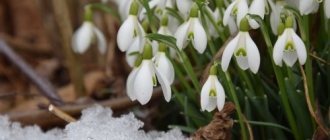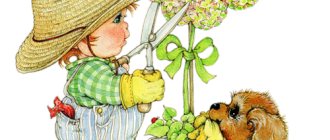System of gaming techniques of the technology “Travel along the map to the city of sounds”
System of gaming techniques for the “Travel on the map in the city of sounds” technique
One of the most important problems in ensuring the quality of modern preschool education is the use of active forms of organizing the educational process: experimentation, research, a system of problematic issues, project activities, etc., but in the practice of speech therapists, methods and techniques remain traditional, mainly illustrative and explanatory. The use of the “Map Travel” technology allows the teacher to solve not only specific problems, but also provides the opportunity for a smooth transition from traditional classes to forms of joint activities; “natural play” provides an opportunity to effectively work with children, regardless of their characteristics and level of development. In my practice, I use a system of educational games and exercises that I developed, “Travel on a map in the city of sounds,” based on a type of research called traveling on a map (proposed by N.A. Korotkova). When organizing direct educational activities, the teacher must take into account general developmental tasks, formulate developmental content in a form that attracts the child, stimulates his development and allows him to take an active research position. This type of research can be used to create favorable conditions for performing developmental tasks to master the basics of literacy. Initially, in accordance with the selected sequence of training sounds, a map was created consisting of 4 parts (for training periods). It depicts sound houses in which the children of the residents live - “sounds”. Houses have different shapes (hard consonants, soft sounds) and roof colors (consonants, vowels). Some of them have bells on the walls (houses for sound consonants). To indicate whistling and hissing, “signs” were introduced - symbols (joint of lips, crown) - this is a card that is used by speech therapists and teachers (always found in the group). A black and white version of the map has been created for children, allowing them to generalize, clarify their knowledge and independently create a map of the city of sounds throughout the entire course of study. Children are invited to “populate” together and then, regardless of the sound they are learning, paint the house. During this work, tasks such as orientation on a sheet of paper and the development of graphomotor skills are solved in parallel. The card is created by the child throughout the course of study, for two years. The starting point on the map is a kindergarten, the ending point is a school. The student knows that knowledge of letters and sounds will help in learning at school in the future. This serves as a motivating moment for the preschooler. In the context of using the technique of traveling on a map, it is possible to implement any content directly in educational activities, which are traditionally included in the literacy course for preschoolers. The use of this type of research in the practice of a speech therapist does not pursue the goal of giving children memorized formulations of the characteristics of sounds. The main thing here is to create integral images in children's imagination through the use of bright “signs” - symbols (shapes and colors of house roofs). This makes it possible to structure educational activities in such a way as to evoke cognitive initiative in children and support their research activities. Having adopted the position of an interested and curious partner, the teacher should approximately adhere to the following sequence of research stages: 1. Updating the cultural and semantic context, encouraging children to ask questions related to the topic being studied (creating a problem situation). 2. Discussion of ideas, children putting forward hypotheses on issues that have arisen (for example, the direction of movement is determined, a path is outlined); 3. Experimental control or symbolic fixation of the object of connections (use of games). Game “Tell about the sound” Children are invited to independently develop a reaction plan using symbolic cards. In the process of working with children, these symbols undergo changes and additions appear. So in the first version there was no digital designation on the cards. The need for its appearance was dictated by the fact that some students could not remember the order of the cards (answer plan). As a result, two options for a set of cards are used in the work: with and without digital designation (depending on the level of training). The appearance of the “crown” symbol made it possible to memorize whistling and hissing; The exclamation mark is a reminder that the sound is always soft (hard). Game “Houses for Sounds” Children are invited to build a house for sound or sounds. The previously studied sound characteristic has a visual expression. With the task set: to find differences in the characteristics of sounds, the child can easily cope with a previously “built” house. Game "Magic Sounds" Residents of the city of sounds wear costumes in their favorite colors. You can ask the children to put on the sounds (color the costume) or, after choosing a villager, write their name (write the letter). 4. Offer children disciplinary material that ensures continued exploration in free activity in groups or at home with parents: creating a collective alphabet (to improve letter memorization) and a letter theater (theater games). Using the technology of working with a map makes it possible to increase the chances of developing integrative qualities in children, such as independence, activity, initiative, curiosity, which contribute to the formation of ways to organize experience with a traditional orientation to Argument; the teacher is more focused on transmitting specific information.
What else to read: Methodological development of the lesson “Modeling flowers from plasticine” for children 7-8 years old
We recommend watching:
Development of communication skills of children 5-7 years old in theatrical activities. Spiritual and moral education of preschool children. Introducing preschoolers aged 5-7 years to Russian folk culture. Educational materials for preschoolers. Memorizing Serov's poem "Bukanevo"
Similar articles:
Methodology for conducting physical education in kindergarten
Morning exercises in the preparatory group in a playful way
Dramatic games for children 5-6 years old
Kindergarten with dances for children 5-7 years old. Scenario
Outdoor games as a means of harmonious development of a child
MAGAZINE Preschooler.RF
Entertainment for Russia Day for younger preschoolers “Travel with a kolobok along a fairy-tale map of Russia”1 slide. – “Russia”
Host: I have a birthday, and you have a birthday. There is a birthday for the country in which we were all born.
June 12 is Russia Day, the holiday of a great and strong country. The holiday of the country in which we live, the Country that we call our Motherland.
1 child avg. gr. If we have to fly for a long, long, long time on a plane, 2nd child Wed. gr. If we look at Russia for a long, long, long time,
3 child Wed. gr. Then we will see forests, and cities, Ocean spaces, Ribbons of rivers, lakes, mountains...
4 child Wed. gr. We will see the endless distance, the Tundra, where spring rings, 5 child Wed. gr. And then we will understand what a big, vast country our Motherland is.
Slide 2 – the first verse of the song “My Russia has long braids...” (pictures change by clicking in accordance with the words of the song text)
Leading. Yes, our Motherland is both beautiful and rich, guys!
There are many secrets and miracles in it, There are many fabulous places in Russia.
Slide 3 – Kolobok.
Host: Who's rolling there in the distance Without paths, without roads? On a hill, on a hump, Through a field and a forest?
(When clicked, the kolobok song sounds. The kolobok appears.)
Kolobok: Hello, my friends! You all recognized me. I am perky and cheerful, I have a ruddy side.
A kind, glorious little bun has rolled to you from a fairy tale. I love to travel and I invite you with me.
Slide 4 – fabulous map of Russia. (First, with a click, fairy-tale characters appear, and then a fairy-tale map of Russia appears.)
Kolobok. There are many different miracles in Russia, There are many fabulous places in Russia. Let's go, go ahead! A fairy tale awaits you to meet us.
Slide 5 – Kukoboy – the birthplace of Baba Yaga. Presenter: In the land of Yaroslavl there is a village called Kukoboi. There's a hut in the forest
Old ladies alone. That grandmother has a bone leg, And everyone calls her Baba -... (Yaga)
(By clicking, Baba Yaga’s song “On Unknown Paths” , Baba Yaga appears, she dances with the children)
Baba Yaga: I'm not a scary old lady, they called me Yaga. They say that I'm bad, with a bone like a leg.
Don’t believe me that I fly on a broom, it’s not true! I’m not a bad granny, I’m not scary anymore.
I have prepared my magical riddles for you guys. There is a lot of goodness in my hut. This is what the riddles will be about, friends.
Slide 6 – the riddles of Baba Yaga. (The answers appear by clicking)
1. This miracle is just right I tried it on myself more than once: If you put them on, - Through the mountains, through the fords,
They will carry you through. (Boots - Fast Walkers)
2. It shines and shines, It doesn’t flatter anyone, But it will tell anyone the truth - It will show them everything as it is. (Mirror)
3. I am fluffy, soft, round. There is also a tail, but I’m not a cat, I often jump elastically, I’ll swing under the chest of drawers. (Ball of thread)
4. This is not a slacker at all - This is a miracle - a needlewoman! Ask her quickly - she will feed all the guests in an instant:
On the table and early in the morning It will unfold... (Self-assembly)
5. He flies out of the clouds and flies over the trees! Flying across the sky without worries, Not a helicopter, not a plane:
The pilot does not control it, but it always flies forward (Carpet - Airplane)
6. What kind of miracle? What a miracle? - How beautiful it is! This Saucer is not simple - This Saucer is Golden:
It will show you everything, as if you were in a movie (Magic Saucer with a Golden Apple)
Slide 7 – mortar and broom. And in this object I often fly, I cover my tracks with another object. (Mortar and broom) Well, so that you don’t get bored,
I suggest you play, fly on a broom.
(The “Flying on the Broom” ; kids “fly” on a broom.)
Wow, what fun we had flying! Yes, it's time to say goodbye to you. It's time for me to return. Goodbye friends!
(Sits on a broom and flies away)
7th slide (click) – a bun appears. Kolobok. The journey continues. We're moving on. Slide 8 – Ermakovo village, Ryaba chicken museum.
Host: And in the village of Ermakovo there is a painted house. And the chicken Ryaba lives in it with his large family.
Slide 9 - hen and chickens Presenter: Ryabushka Hen, a kind fat girl, walks around the yard, calls the children: Co-co-co, guys, where are you, chickens,
Yellow lumps, daughters and sons? Hurry to mom: we will eat seeds and crumbs with you, get out the spoons.
(Click on the slide, the song “Chick, chick, my chickens” . Ryaba the chicken appears; she dances with the children.)
Ryaba Chicken: I am a Ryaba hen - I live in a village. I have long had a reputation for being smart and beautiful.
Everyone here knows me, loves me, respects me. They built a museum for me. There are a lot of different things there.
There is the whole chicken family: Cockerel, chickens, me. There is a grandmother and a grandfather here, and there is a mouse, our neighbor.
The mouse, such a cheat, cleverly broke the egg with its tail. You guys, help me, quickly collect the egg from the fragments.
(The game “Assemble an egg from fragments” is played. Children of the 2nd junior and middle groups play. From the 2nd junior group there are 4 people (their testicle is cut into 4 parts), from the middle group 6 people (their testicle is cut into 6 parts)
Chicken Ryaba: Thank you, my friends! Now kids, hurry up and come here. Let's play now
And catch up with the testicles. Kinder Surprise around the hall .) 1-2-3 - catch the egg! (Children catch up with the testicles and bring them to the chicken in a basket)
Chicken Ryaba: You have a lot of fun, But the time has come to say goodbye. Goodbye, kids! I'm waiting for you to visit me.
(The chicken leaves)
10 slide – bun. Kolobok: I’ll introduce you to another hero. The city bears his name.
And I think for good reason.
Slide 11 – the city of Myshkin and the Museum of the Little Mouse.
Leading. Along the banks of the big river there are little houses everywhere. A famous city stands here - the ancient Russian city of Myshkin.
Here is the mouse country Myshkin loves the children of the mouse in their holes, they don’t live, they built a palace here.
Here the mouse king and queen welcome guests to the palace. And the adorable little mice lead the guests through the wards
And they will tell you what and where.
(A toy mouse appears on the screen)
Mouse: I have a small stature and a long tail. Gray coat, sharp teeth. I live in a hole
I love gnawing on crusts. I love rustling behind the wall, squeaking in a thin voice. And my fast legs
They will always run away from a cat. Hello guys! Hello little mice! I came to visit you
And she brought the game. Get into a circle quickly, and play more fun!
(The game “The mice came out one day!” . Children of the 1st junior group play first, and then the 2nd junior and middle groups)
Mouse: And I have one more gift for you guys.
I decided to give you a fairy tale
About the mouse, that is, about myself.
(Children watch the cartoon “About the Mouse Who Wanted to Become Strong” )
Slide 12 - the bun says goodbye to the guys.
Kolobok: Our journey is over, guys. The time has come for me to say goodbye to you. Russia is great and rich in fairy tales, I will meet you more than once, friends!
I will introduce you to new heroes. I'll tell you about the place where they live, We will see a lot, we will learn a lot, But for now, goodbye, fairy tales await me. Goodbye, guys! See you again!
| Next > |
Preview:
Educator: - Each city, like a person, has its own age. You also have age. How old are you? (points to the child, he answers), What about you? (asks several children). And I have age. Who knows how old our city is (Children's answers - 124.) Okay. Our city is called Novosibirsk, and what its inhabitants are called (Novosibirtsy.) So, you too are Novosibirsk people.
Equipment: photographs of city views, coat of arms, musical accompaniment (Paul Mauriat “In the Animal World”, Leonid Utesov “Planes First”, Pyotr Tchaikovsky “The Nutcracker”, Muslim Magomayev “Victory Day”, Yeralash “Music of Happiness”, church bells “Wedding bells”, M. Malinin “Children’s anthem of Novosibirsk”).
Educator: - Well done. Take your seats. First, the bus travels along the street where our kindergarten is located. Who knows what it's called?
Educator Every city, like a person, has its own age.
Children
: — Green color means health, natural resources of the Siberian land, white represents purity of thoughts, reminds of the endless Siberian snows. The blue color symbolizes the great Ob River, and the black and silver thin belt symbolizes the Trans-Siberian Railway with a railway bridge, a structure that became the basis for the emergence and construction of Novosibirsk.
— to form in children a sense of cohesion, unity, and a positive emotional mood within the team;
Goal: To introduce children to China, its people and nature.
Evolutionary tasks:
Learning Objectives:
Training assignments:
|




